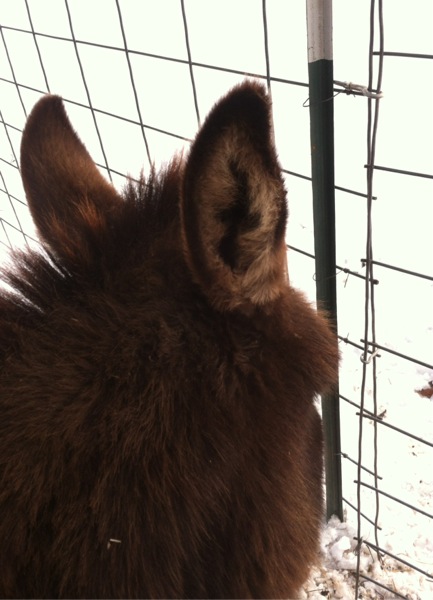In an effort to expand my repertoire of lamb recipes, we roasted a whole lamb for Easter.
With a wether lamb in the barn, a houseful of easy to please guests, roasters locally available and an experienced pig roasting friend, I was ready to attempt this new venture.
Honestly, the recipes I read on the internet were a bit daunting. The ground is still partially frozen, so digging a big hole for a fire was out of the question and an expensive spit did not seem like a good investment, for our first try. So we decided to apply the “low and slow” method of roasting meat to create a tender, evenly cooked product.
Here’s what we did:
I brought the lamb in from the cooler an hour before roasting.
We started the charcoal with two chimney starters in the belly of the roaster. Once the coals in the chimneys were hot, they were poured out and 50 more pounds of briquets and a few pieces of apple wood were piled on top. Our roasting expert ( friends with skills are this cook’s blessing) used a shop vac to blow air on the briquets, to get the coals burning quickly.
While the fired was building, I blended a rub for the lamb: olive oil,chopped garlic and parsley, and homemade basil, lemon and chili salts. We covered the whole lamb with the seasoned olive oil and added a few heads of garlic and quartered oranges to the abdominal cavity and stitched it up.
Once the coals were hot, the drip pan was set in the roaster then the grate to heat.
We placed the lamb, belly side toward the fire, legs splayed and inserted digital thermometers into the leg and shoulder.
Thanks to the wise advice and watchful eye of our friend, the grill was kept at 225’.
Although I would have preferred to take the lamb off the grill at around 145’, it cooked much quicker than expected, and we pulled it off the grill when the leg thermometer read 166’. (This took about 2 1/2 hours of roasting.) The shoulder, which takes longer to cook was about 145’.
We set the lamb on a clean tablecloth on the picnic table and covered it with pieces of foil.
After half an hour of rest, I sliced the lamb.
The meat was moist and slightly smokey.
Perfect for our celebration.
Next time, to protect the bottom of the legs from over roasting, I’ll wrap them with foil.
And, I will remember to take pictures.

































